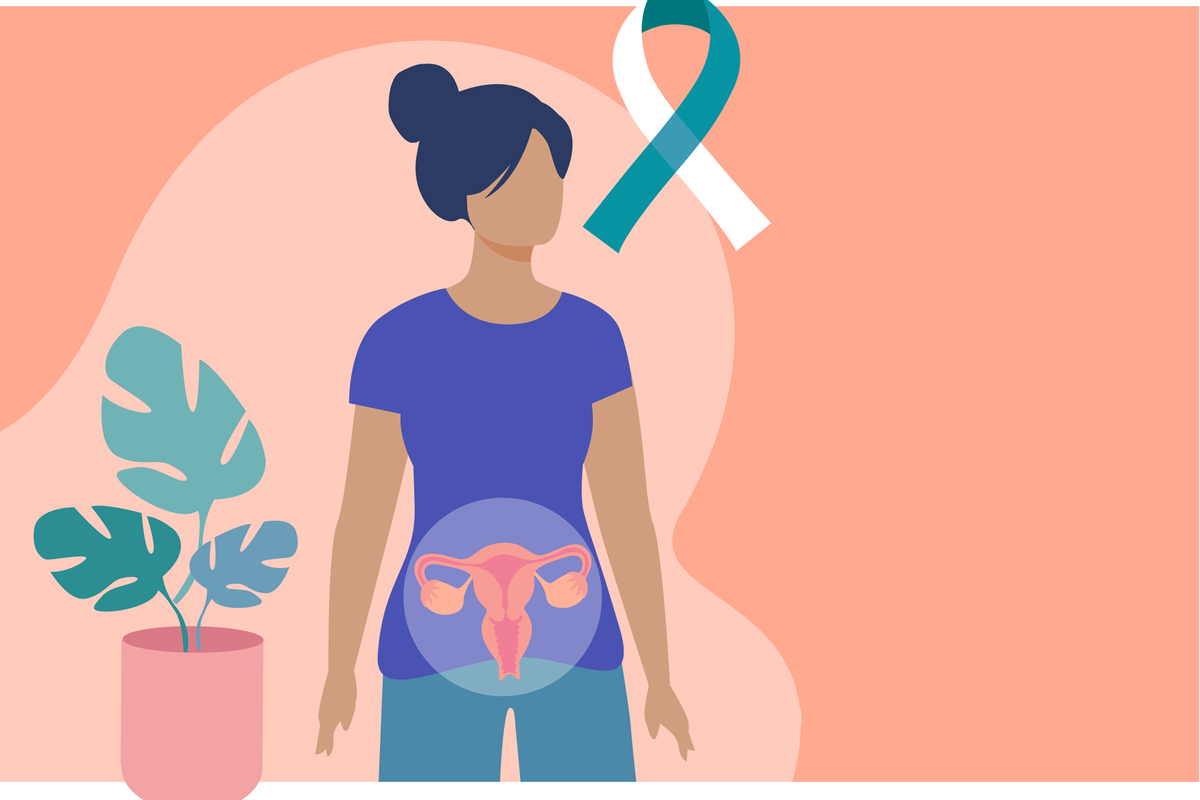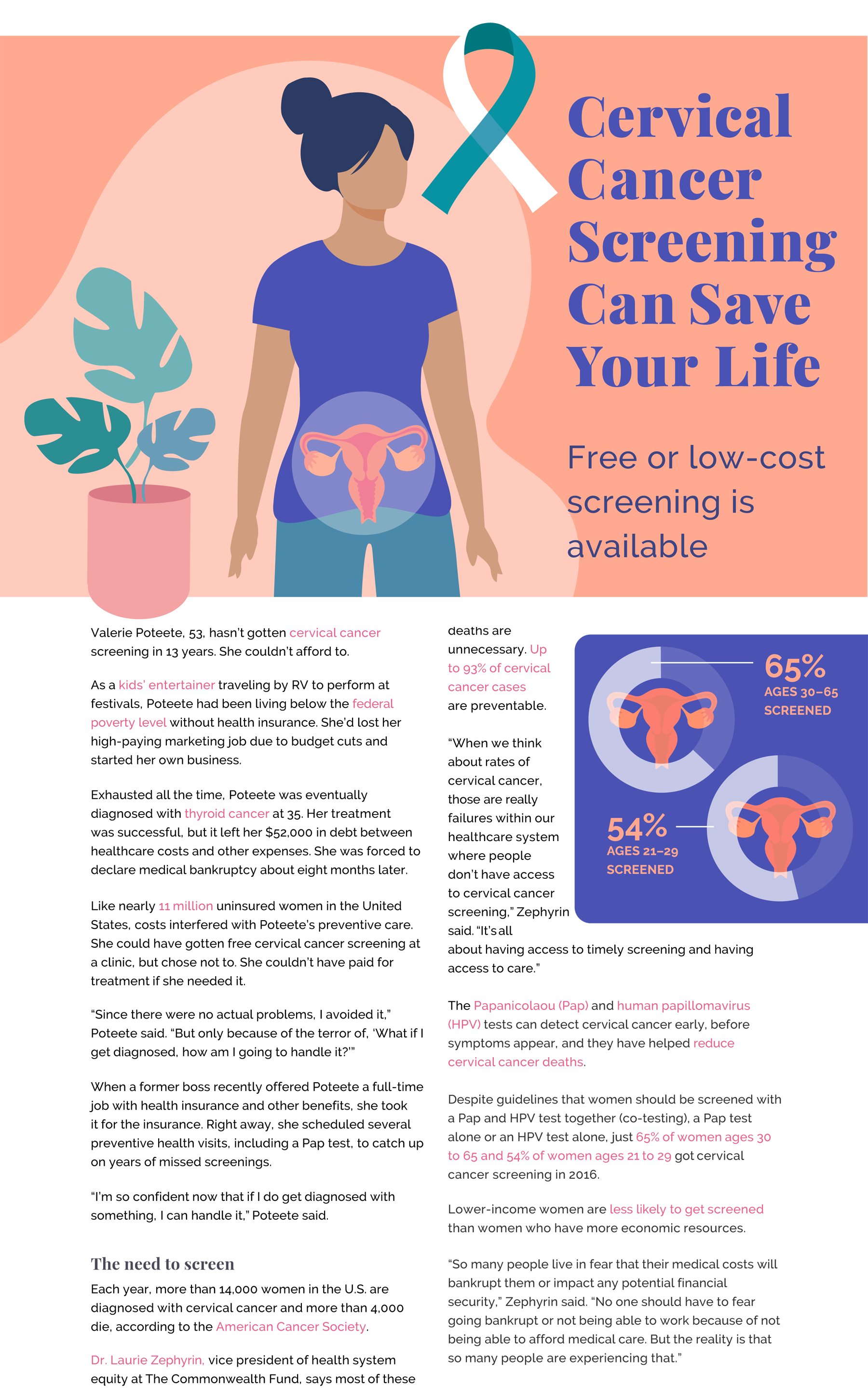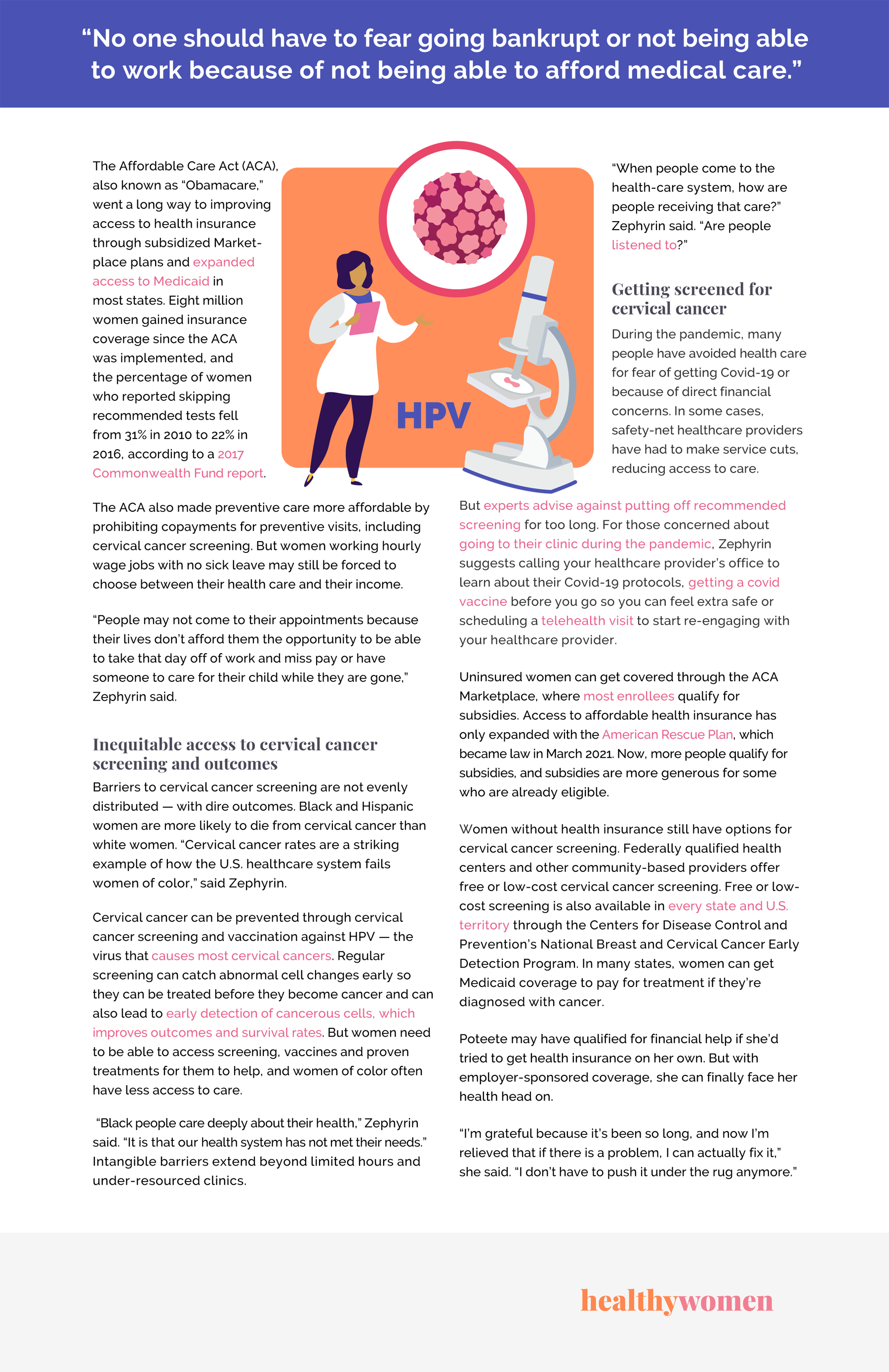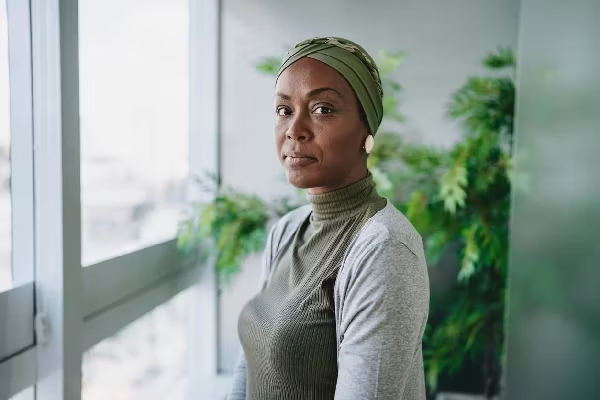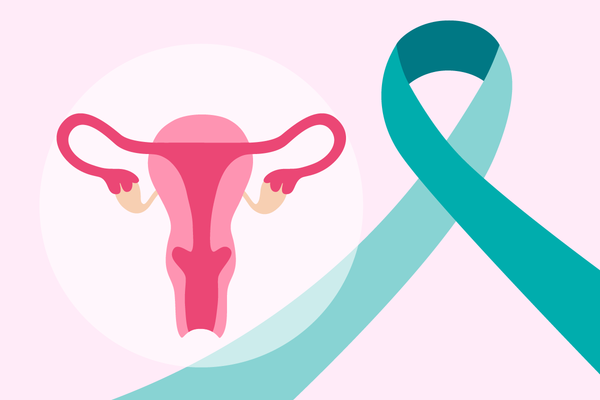Valerie Poteete, 53, hasn’t gotten cervical cancer screening in 13 years. She couldn’t afford to.
As a kids’ entertainer traveling by RV to perform at festivals, Poteete had been living below the federal poverty level without health insurance. She’d lost her high-paying marketing job due to budget cuts and started her own business.
Exhausted all the time, Poteete was eventually diagnosed with thyroid cancer at 35. Her treatment was successful, but it left her $52,000 in debt between healthcare costs and other expenses. She was forced to declare medical bankruptcy about eight months later.
Like nearly 11 million uninsured women in the United States, costs interfered with Poteete’s preventive care. She could have gotten free cervical cancer screening at a clinic, but chose not to. She couldn’t have paid for treatment if she needed it.
“Since there were no actual problems, I avoided it,” Poteete said. “But only because of the terror of, ‘What if I get diagnosed, how am I going to handle it?’”
When a former boss recently offered Poteete a full-time job with health insurance and other benefits, she took it for the insurance. Right away, she scheduled several preventive health visits, including a Pap test, to catch up on years of missed screenings.
“I’m so confident now that if I do get diagnosed with something, I can handle it,” Poteete said.
The need to screen
Each year, more than 14,000 women in the U.S. are diagnosed with cervical cancer and more than 4,000 die, according to the American Cancer Society.
Dr. Laurie Zephyrin, vice president of health system equity at The Commonwealth Fund, says most of these deaths are unnecessary. Up to 93% of cervical cancer cases are preventable.
“When we think about rates of cervical cancer, those are really failures within our healthcare system where people don’t have access to cervical cancer screening,” Zephyrin said. “It’s all about having access to timely screening and having access to care.”
The Papanicolaou (Pap) and human papillomavirus (HPV) tests are essential to detecting cervical cancer early, before symptoms appear, and they have helped reduce cervical cancer deaths.
Despite guidelines that women should be screened with a Pap test, an HPV test or both, just 65% of women ages 30 to 65 and 54% of women ages 21 to 29 got cervical cancer screening in 2016.
Lower-income women are less likely to get screened than women who have more economic resources.
“So many people live in fear that their medical costs will bankrupt them or impact any potential financial security,” Zephyrin said. “No one should have to fear going bankrupt or not being able to work because of not being able to afford medical care. But the reality is that so many people are experiencing that.”
The Affordable Care Act (ACA), also known as “Obamacare,” went a long way to improving access to health insurance through subsidized Marketplace plans and expanded access to Medicaid in most states. Eight million women gained insurance coverage since the ACA was implemented, and the percentage of women who reported skipping recommended tests fell from 31% in 2010 to 22% in 2016, according to a 2017 Commonwealth Fund report.
The ACA also made preventive care more affordable by prohibiting copayments for preventive visits, including cervical cancer screening. But women working hourly wage jobs with no sick leave may still be forced to choose between their health care and their income.
“People may not come to their appointments because their lives don’t afford them the opportunity to be able to take that day off of work and miss pay or have someone to care for their child while they are gone,” Zephyrin said.
Inequitable access to cervical cancer screening and outcomes
Barriers to cervical cancer screening are not evenly distributed — with dire outcomes. Black and Hispanic women are more likely to die from cervical cancer than white women. “Cervical cancer rates are a striking example of how the U.S. healthcare system fails women of color,” said Zephyrin
Cervical cancer can be prevented through cervical cancer screening and vaccination against HPV — the virus that causes most cervical cancers. Regular screening can catch abnormal cell changes early so they can be treated before they become cancer and can also lead to early detection of cancerous cells, which improves outcomes and survival rates. But women need to be able to access screening, vaccines and proven treatments for them to help, and women of color often have less access to care.
“Black people care deeply about their health,” Zephyrin said. “It is that our health system has not met their needs.”
Intangible barriers extend beyond limited hours and under-resourced clinics.
“When people come to the healthcare system, how are people receiving that care?” Zephyrin said. “Are people listened to?”
Getting screened for cervical cancer
During the pandemic, many people have avoided health care for fear of getting Covid-19 or because of direct financial concerns. In some cases, safety-net healthcare providers have had to make service cuts, reducing access to care.
But experts advise against putting off recommended screening for too long. For those concerned about going to their clinic during the pandemic, Zephyrin suggests calling your healthcare provider’s office to learn about their Covid-19 protocols, getting a Covid-19 vaccine before you go so you can feel extra safe or scheduling a telehealth visit to start re-engaging with your healthcare provider.
Uninsured women can get covered through the ACA Marketplace, where most enrollees qualify for subsidies. Access to affordable health insurance has only expanded with the American Rescue Plan, which became law in March 2021. Now, more people qualify for subsidies, and subsidies are more generous for some who are already eligible.
Women without health insurance still have options for cervical cancer screening. Federally qualified health centers and other community-based providers offer free or low-cost cervical cancer screening. Free or low-cost screening is also available in every state and U.S. territory through the Centers for Disease Control and Prevention’s National Breast and Cervical Cancer Early Detection Program. In many states, women can get Medicaid coverage to pay for treatment if they’re diagnosed with cancer.
Poteete may have qualified for financial help if she’d tried to get health insurance on her own. But with employer-sponsored coverage, she can finally face her health head on.
“I’m grateful because it’s been so long, and now I’m relieved that if there is a problem, I can actually fix it,” she said. “I don’t have to push it under the rug anymore.”
This resource was created with support from Hologic.
- The Importance of Cervical Cancer Screening During COVID-19 and ... ›
- Cervical Cancer - HealthyWomen ›
- Don't Put Off Your Screening and Vaccination for Cervical Cancer ... ›
- My Close Friend’s Cancer Diagnosis Helped Save My Life - HealthyWomen ›
- I Could Have Stopped Cervical Cancer With a Routine Test - HealthyWomen ›
- A Conversation About HPV & Cervical Cancer Screening - HealthyWomen ›
- Una conversación sobre las vacunas contra el VPH y las examinaciones de cáncer cervical - HealthyWomen ›
- Benefits of the HPV Vaccination: Cancer Prevention - HealthyWomen ›
- Beneficios de la vacuna contra el VPH: Prevención del cáncer - HealthyWomen ›
- Difference Between a Pap Test and an HPV Test - HealthyWomen ›
- Take Steps Toward Preventing Cervical Cancer - HealthyWomen ›
- How often should I be screened for cervical cancer? - HealthyWomen ›
- Kate Walsh Wants You to Get Screened for Cancer - HealthyWomen ›
- Don't Postpone These Types of Preventive Care - HealthyWomen ›

